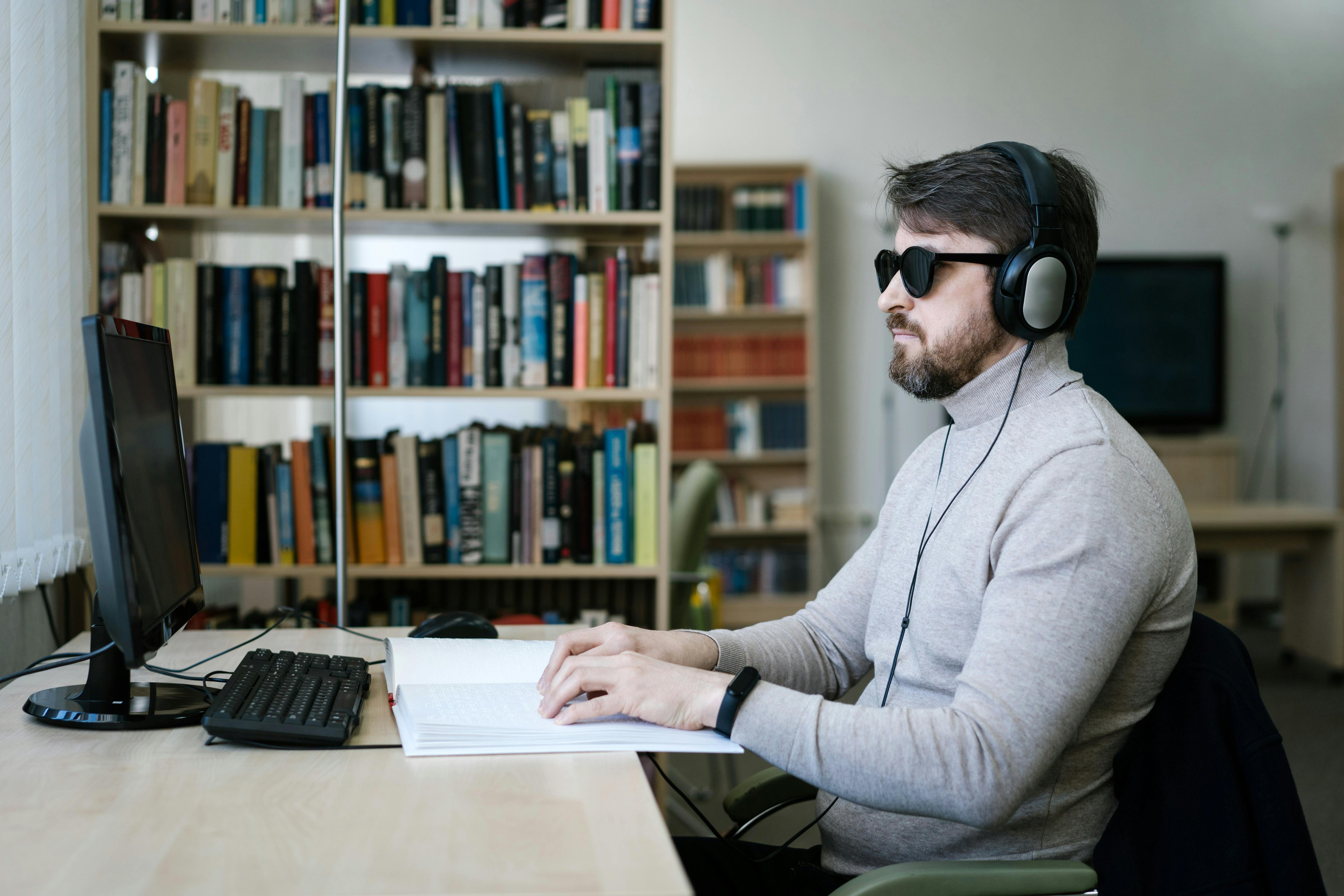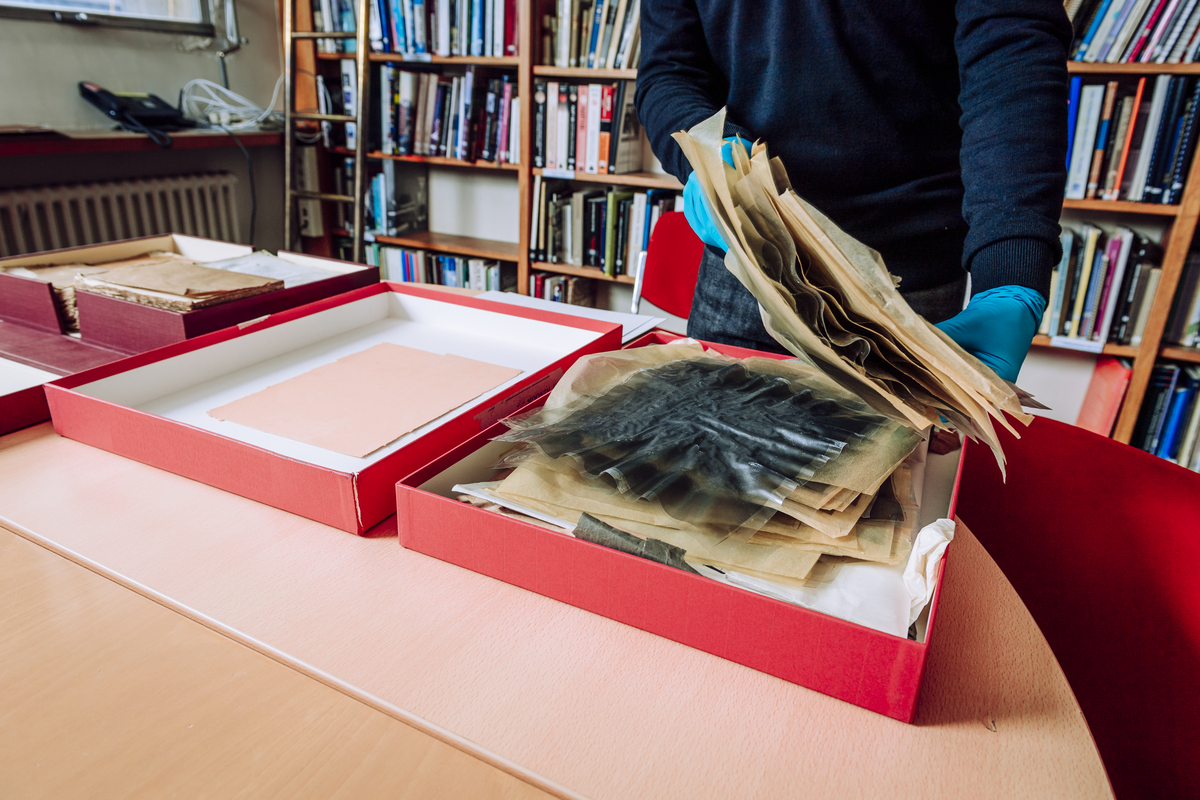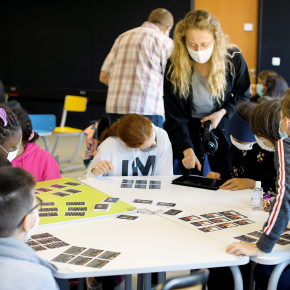Innovation in the humanities and social sciences – from cybersecurity to educational games
Rencontres Innov'SHS, the flagship event for CNRS Humanities & Social Sciences, will take place at the Maison de l'Amérique Latine in Paris on October 9th. This is the perfect opportunity to find out how the humanities and social sciences are innovating in a wide range of fields, sometimes even in most unexpected areas. And for the first time, the prize for innovation in the humanities and social sciences will be awarded at this event.
Emilie Bonnefoy still finds it surprising. "Combining cognition and cybersecurity isn't all that frequent. And yet, to our surprise we got a good number of responses from research laboratories to the survey we asked the CNRS Business Relations Department (DRE) to run". Maria Teresa Pontois, head of innovation, technology transfer and industrial partnerships at CNRS Humanities and Social Sciences, confirms the humanities and social sciences' interest for cybersecurity and the role these sciences play. "They are true providers of solutions in this area".
On October 9th, we will be able to find out the extent to which this is the case during a round table on the subject during the first Rencontres Innov'SHS at the Maison de l'Amérique Latine in Paris. The new event follows on from five editions of the Innovatives SHS fair set up in 2013 by Patrice Bourdelais, then director of the CNRS Institute for Humanities and Social Sciences, now CNRS Humanities & Social Sciences. This year's event will focus on two main areas "where you might not have expected the humanities and social sciences but where we've been successfully proactive", comments Maria Teresa Pontois. A total of six themes will be covered by the round tables this year.

The humanities and social sciences' essential insights into the human and social sides of cybersecurity
In cybersecurity, input from the humanities and social sciences is particularly sought after on "the human and social aspects that are lacking in this sector which mainly just focused on technology for years now", explains Emilie Bonnefoy, a tinge regretfully. "We need to know about the human brain and how individuals perceive safety in their own context and with their own specificities. That's where the social sciences and humanities come in by shedding light on technology in a complementary way". This company director goes on to explain her idea in more detail. "At Open Sezam we're convinced an efficient digital transformation can't exist without security and the inclusion of all society's stakeholders. And yet, mad as this may seem, the inclusion of the disabled and the illiterate isn't taken into account by companies developing authentication solutions at all". To address this shortcoming, Open Sezam, which was incubated at the Campus Cyber in Puteaux in its early life1 "on the same floor as a CNRS office"2 , is working increasingly closely with its scientific neighbour and particularly the DRE. A survey of humanities and social sciences laboratories enabled the DRE to identify a number of units specialising in human cognition. One prime contact was Nicolas Louveton from the Cognition and Learning Research Center (Cerca)3 , a unit working at the interface between biology and the humanities and social sciences. The collaboration between this University of Poitiers lecturer and Open Sezam also involves the Poitiers University Hospital Centre and the Valentin-Haüy association and has produced the ALIAS technology transfer programme supported by the French National Research Agency. This programme's aim is to enable visually impaired people to log in on digital technology in total security to carry out everyday online tasks like buying train tickets, making a doctor's appointment or for online banking. A post-doctoral fellow recruited by the Cerca in the framework of the programme will carry out a survey based on a panel of visually impaired users recruited by the Valentin Hauÿ association. The idea is to test and adapt the strong authentication solution Open Sezam has developed with these respondents.
NumDiag is another ongoing project under development with its research focus combining law, IT and behavioural sciences. This project is currently in the early stages of development with CNRS Innovation and aims to fill a gap in cybersecurity: "Our initial starting point was the observation that the progressive connection of homes was generating new security risks for user privacy which residents aren't warned about, unlike for energy leakage issues", explains Gwenaëlle Donadieu. This lawyer specialising in commercial practices and personal data protection has a doctorate in private law from the University of Montpellier. She initiated the project with the computer scientist Anne Laurent4 and together they are developing a data protection confidence score calculated by automated software so developers of connected environments can certify data are being managed effectively and properly with adequate protection for users' privacy. The idea of bringing together legal research and computer sciences has proved especially fruitful. "The interdisciplinary approach enriches our understanding of connected objects. Currently certain issues are solely dealt with from a legal standpoint without adding perspective on technical realities and vice versa. We are proposing a different approach which integrates all factors, including the user behaviour analysis, to manage cybersecurity risks as effectively as possible", says Gwenaëlle Donadieu.
![Des élèves impliqués dans un projet long autour du jeu [Kosmopol:it]. © Christian Dury, CNRS, MSH LSE](/sites/default/files/inline-images/G25A7075.jpg)
When innovation rhymes with co-construction
In their own way, Alias and NumDiag both illustrate the shift in the humanities and social sciences as regards the social and environmental impact of innovation. Maria Teresa Pontois reflects on this shift in focus: "The humanities and social sciences work on scientific issues with high application and transfer potential – they're a true a source of ideas for solutions. That's why Rencontres Innov'SHS is a forum for interdisciplinary and interprofessional co-construction involving both scientists and socio-economic players".
The adventure of the [Kosmopol:it] board game testifies to the power of co-construction. This board game was the fruit of a collaboration between Lyon's Dynamique du Langage (DDL) laboratory5 and Opla Publishing, with support from the CNRS's SATT (technology transfer company) Pulsalys. It combines gastronomy and linguistic diversity and almost 100,000 copies have been sold since its launch in January 2020 with a German translation and an upcoming translation into Japanese. But, above all, the game has led to a new form of scientific mediation in linguistics, namely long-term projects in schools. Egidio Marsico, head of scientific outreach at the CNRS's Maison des Sciences Sociales et des Humanités de Lyon Saint-Étienne6 and previously a research engineer at the DDL, gives details of these new kinds of initiatives. "In 2020 we launched our first long-term project at the Victor-Schœlcher secondary school in La Duchère, a working-class part of Lyon. Over the course of a school year, pupils interviewed and recorded each other like two linguistics researchers in the field to spotlight the linguistic diversity at the school". Since [Kosmopol:it] came out, it has been used for one or two long-term projects in secondary schools in Lyon. The projects have got whole classes on board, not least because the game "gets everyone talking at the start of the project, puts pupils on equal footing when it comes to languages nobody knows and helps them feel less inhibited about their own languages". This is particularly the case for allophone pupils who recently arrived in France and therefore have no command of the Gallic tongue. The game "makes it easier to learn French in a roundabout backdoor way, by making the most of their linguistic diversity and language skills".
These are just some of the many projects that testify to the rapid growth of innovation in the humanities and social sciences in recent years (see key figures below). Marie Gaille, the director of CNRS Humanities and Social Sciences, explains that "a true community has developed over time whereas in the 2010s support had to be provided for colleagues who were sometimes unknowingly involved in innovation initiatives or because they didn't know much about how to go about it. As we're in the CNRS, our own innovation can be compared with various other forms in the other sciences which gives us a great opportunity to develop a fine-tuned approach to innovation in the humanities and social sciences and at the interfaces between them. Innov' SHS fully testifies to the involvement of the humanities and social sciences in innovation and provides time for thought, projection into the future and a celebration of original and inventive initiatives".

Notes
- The 2019 creation of Campus Cyber was instigated by the President of the French Republic. It brings together companies (major groups, SMEs, start-ups), government departments, training organisations, research stakeholders and associations on one site. It aims to promote French cybersecurity excellence by strengthening synergies between public, private and academic stakeholders who have been brought together on a single attractive site with a national dimension, are connected to developments in France's regions and have visibility in Europe and internationally. The Campus Cyber will have over 170 members by 2023.
- The CNRS has a space in the Research and Innovation Hub, a third party structure run by the Inria on behalf of the entire academic community. The head of cooperation with the DRE's Cybersecurity sector is responsible for the institutional representation of the CNRS to all Campus Cyber stakeholders.
- CNRS / University of Poitiers.
- Professor at the University of Montpellier, within the Laboratory of Computer Science, Robotics and Microelectronics of Montpellier (CNRS / University of Montpellier).
- CNRS / Lumière Lyon 2 University.
- CNRS / Université Jean-Monnet / Université Lumière Lyon-II / Université Lyon-III Jean-Moulin.
